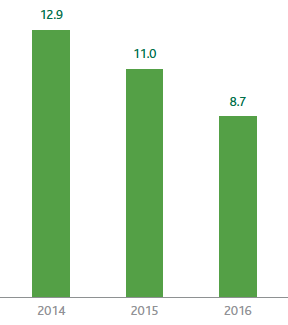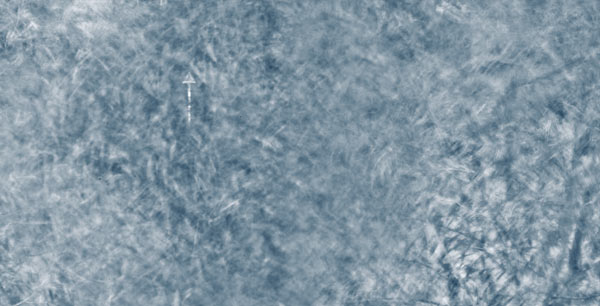The protection of biodiversity

In 2016 renovation work was completed along 172 km of the Zimella – Cervignano pipeline, which runs through the agricultural plains between Veneto and Lombardy.
Works started in the same area to remove a section of the decommissioned “Tarvisio – Sergnano” pipeline, approximately 128 km long.
The environmental works carried out restored the land to its original agricultural use, restoring the landscape and fertility.
Snam considers safeguarding nature in the areas in which it operates to be of particular importance. For this reason, during the realisation of works it implements the most suitable design choices to keep impacts on biodiversity to a minimum and once these have been completed it deploys environmental restoration works and monitoring projects in accordance and in conjunction with the bodies responsible.
The goal of replanting vegetation, particularly reforestation, is not just to restore the forested areas, but generally to rebuild the landscape on the whole and recover the biological function of planted areas, especially in their role as animal habitats with specific biodiversity features. The replanting and reforestation is followed by “farmland care”, in other words the care and maintenance, for a period of at least five years, of the vegetation planted.
The monitoring projects concern the layouts of several pipes that interfere, even if only marginally, with natural areas of ecological and wildlife value, and are aimed at checking the effectiveness of the process of restoring the areas affected by the works, based on comparisons between the conditions after the restoration (post-operam) and the original conditions (ante-operam). The monitoring is usually carried out for the most important habitats identified during the planning stage.
DISTANCE COVERED BY PIPELINES IN NATURA 2000 NETWORKING SITES (km)

| Download XLS (16 kB) |
Special Protection Zone/Site of EU interest |
km |
Former sugar plant fields of Argelato River Reno floodplain |
2.130 |
Crevalcore habitats and environmental restoration |
0.260 |
“Le Poscole” habitat |
3.388 |
Danesi quarries |
0.550 |
Greto dello Scrivia (Scrivia gravel river bed) |
1.111 |
Fiumara di Palizzi |
0.380 |
Fiumara Amendolea |
0.920 |
Total |
8.740 |
| Download XLS (16 kB) |
|
2014 |
2015 |
2016 |
||
|
|||||
Restoration |
78 |
240 |
227 |
||
New reforestation* |
16 |
11 |
3.7 |
||
Plant care |
124 |
140 |
98 |
||
Environmental monitoring |
1,055 |
1,009 |
565 |
||

Protecting biodiversity along the “Brogliano-Schio” pipeline
The laying of the “Brogliano – Schio (DN 250)” pipeline took place in the province of Vicenza, along a stretch around 15 km long, involving the municipal areas of Brogliano, Cornedo Vicentino, Monte di Malo, Malo, San Vito di Leguzzano and Schio. The work involved replacing the existing pipes, which go back to the fifties and will be decommissioned and removed from the site.
The pipeline passes through the EU site of importance (SIC) IT3220039 “Le Poscole” habitat, in the municipal areas of Cornedo Vicentino and Monte di Malo for about 3.4 km. The works also affected protected habitats: natural and semi-natural hay meadows under habitat 6510 “Lowland hay meadows (Alopecurus pratensis, Sanguisorba officinalis)”. These hay meadows are protected because they are semi-natural environments in a grassy state and not cultivated or abandoned for spontaneous reforestation.
In order to protect the biodiversity of the meadow areas, the operation involved very careful protection of the turf by cutting and keeping the sods and putting them back in place at the end of the works.
An area of approximately 15,000 square metres of meadow has been turfed. The sods have been laid outside the cutting area, conserved and suitably protected for the entire period of the works. At the end of the works, the sods have been put back in place, restoring the grassy covering which have a specific role in nature. The turf will re-establish it completely next spring through spontaneous seeding processes.
GRI-G4:EN11,EN12,EN13